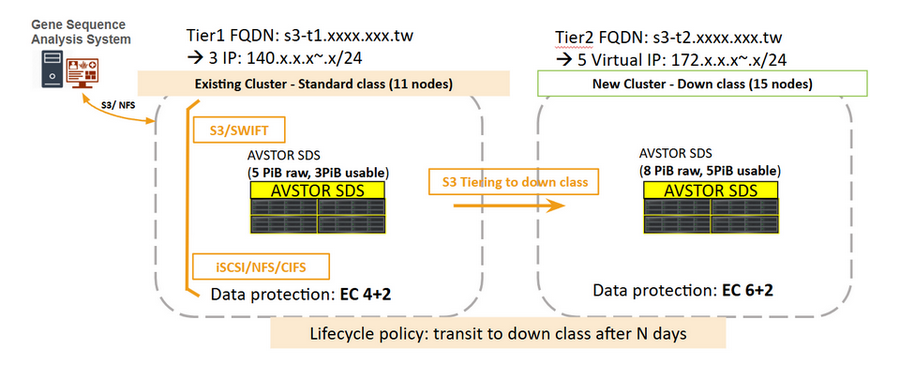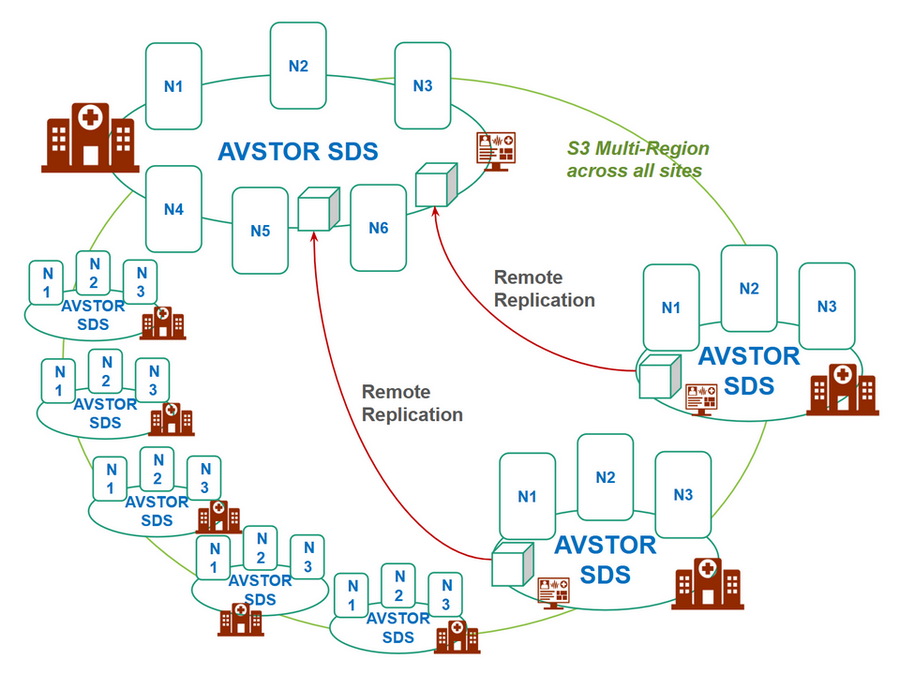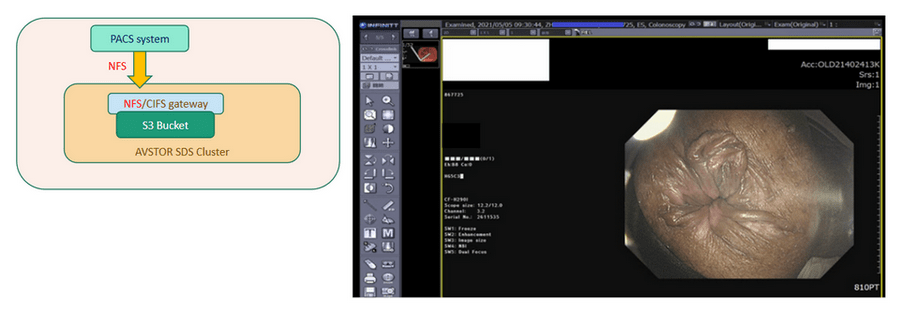Software-Defined Storage (SDS) Modernization for HPC Service Infrastructure
Use Case 1
Customer Profile :
One of ASIA's leading high-performance computing (HPC) service providers
A large-scale HPC service provider in ASIA, focusing on gene sequence analysis, faced the challenge of managing and processing vast amounts of unstructured genomic and scientific data.
Solution :
Deployed AVSTOR mSCALE SDS
> AVSTOR mSCALE SDS solution addresses the challenge of managing an ever-growing volume of unstructured data exceeding 10 petabytes (PiB) in raw capacity, ensuring scalability, performance, and operational efficiency.
> S3 tiering feature is automatically to categorize and move the data between different storage tiers—Tier1 (hot, frequently accessed) and Tier2 (warm, rarely accessed)—based on usage patterns.
> Data Passage technology between Files (CIFS/NFS) and S3 enables the user to export S3 bucket as NFS folder.

Software-Defined Storage (SDS) Modernization for Electronic Medical Record (EMR)
Use Case 2
Customer Profile :
One of Taiwan Medical Centers
Large-scale healthcare provider managing over 300 million EMR records.
Solution :
Migrated to AVSTOR mSCALE SDS Object Storage to store EMR data
Original pain point: native NAS limitation. Huge amount of unstructured data is tough challenges for storage scalability, performance, and cost.
> S3 multi-region with single name space
> Data replication across multiple hospital sites. No service interrupt even during site failures.
> Doctor access time reduced from 6 seconds to 2 seconds for full EMR records.

Software-Defined Storage (SDS) Modernization for Healthcare Provider's PACS
Use Case 3
Customer Profile :
One of Taiwan's leading Healthcare Management providers
Large-scale healthcare management provider managing over 100 million DICOM files.
Solution :
Migrated to AVSTOR mSCALE SDS with Data Passage technology
> Data passage technology between File (CIFS/NFS) and S3 enables files in standard NAS (CIFS/NFS) folders to be seamlessly and transparently stored in a backend S3 bucket.
> In the future, for AI and big data analytics, these files stored in the S3 bucket can be directly accessed, searched, and categorized using S3 object tagging.
> Additionally, the files originally uploaded via the NAS (CIFS/NFS) folder into the backend S3 bucket can also be directly accessed using the S3 protocol. This is especially beneficial in scenarios involving a large number of files, as accessing through the S3 protocol can improve speed and efficiency.
